Automatic Roll-Profile Positioning Detection System Based on Contact Sensor
Abstract
1. Introduction
2. Measuring Device Design
2.1. Measurement Requirements
2.2. Principle of Measurement
2.3. Device Measurement Interface Design
3. Detection System Error Analysis
4. Roll-Profile Compensation
5. Detection System Test Experiment
6. Conclusions
Author Contributions
Funding
Data Availability Statement
Conflicts of Interest
References
- John, S.; Sikdar, S.; Mukhopadhyay, A.; Pandit, A. Roll wear prediction model for finishing stands of hot strip mill. Ironmak. Steelmak. 2006, 33, 169–175. [Google Scholar] [CrossRef]
- Bataille, C.; Luc, E.; Bigerelle, M.; Deltombe, R.; Dubar, M. Rolls wear characterization in hot rolling process. Tribol. Int. 2016, 100, 328–337. [Google Scholar] [CrossRef]
- Phan, H.-T.; Tie, A.-K.; Kosasih, B.; Zhua, Q.; Grima, A.; Ta, T.-D. A study of abrasive wear on high speed steel surface in hot rolling by Discrete Element Method. Tribol. Int. 2017, 110, 66–76. [Google Scholar] [CrossRef]
- Stott, F.-H. The role of oxidation in the wear of alloys. Tribol. Int. 1998, 31, 61–71. [Google Scholar] [CrossRef]
- Özgür, A.; Uygun, Y.; Hütt, M.-T. A review of planning and scheduling methods for hot rolling mills in steel production. Comput. Ind. Eng. 2021, 151, 106606. [Google Scholar] [CrossRef]
- Lu, Y.; Chen, T.; Chen, J.; Zhang, J.; Tisler, A. Machine vision systems using machine learning for industrial product inspection. Mach. Vis. Three-Dimens. Imaging Syst. Insp. Metrol. II 2002, 4567, 161–170. [Google Scholar] [CrossRef]
- Goldshtein, A.-E.; Bulgakov, V.-F. Testing the inner diameter of pipes using the eddy-current method. Russ. J. Nondestruct. Test. 2013, 49, 650–656. [Google Scholar] [CrossRef]
- Wu, J.-H.; Chang, R.-S.; Su, S.-P. Triangulation-based laser range finder with CMOS image sensor in automotive field. Photonics Automob. 2005, 5663, 86–93. [Google Scholar] [CrossRef]
- Guo, Y.; Qu, W. An optical fiber sensor system of on-line detecting roll wear and software imitation. In Proceedings of the 2009 Second International Symposium on Computational Intelligence and Design, Changsha, China, 12–14 December 2009; Volume 2, pp. 103–106. [Google Scholar] [CrossRef]
- Qiao, J.; Sun, C.; Cheng, X.; Yang, J.; Chen, N. Stainless steel cylindrical pot outer surface defect detection method based on cascade neural network. Meas. Sci. Technol. 2023, 35, 036201. [Google Scholar] [CrossRef]
- Bao, Y.; Zhou, Z.; Wei, S.; Xiang, J. Research on surface defect detection system and method of train bearing cylindrical roller based on surface scanning. J. Mech. Sci. Technol. 2023, 37, 4507–4519. [Google Scholar] [CrossRef]
- Xu, J.; Xu, F.; Lou, C.; Zhang, L.; Guo, H.; Zuo, D. An image fusion-based method for recovering the 3D shape of roll surface defects. Meas. Sci. Technol. 2023, 35, 025404. [Google Scholar] [CrossRef]
- Long, F.; Zheng, F.; Jia, P.; Xia, X.; Feng, Q. High-Precision Roll Measurement Method Based on Laser Polarization. Int. J. Precis. Eng. Manuf. 2024, 25, 2099–2110. [Google Scholar] [CrossRef]
- Wei, C.; Song, S.; Zhang, Y.; Ke, Q.; Tian, Y. A novel method for competitive failure behavior and mechanical degradation online monitoring of laser additive work roll under multidimensional damage. Eng. Fail. Anal. 2024, 157, 107897. [Google Scholar] [CrossRef]
- Rashidi, S.; Rajamani, R.-K. HPGR rolls surface wear: In-line scanning of a laboratory-scale HPGR. Min. Metall. Explor. 2020, 37, 239–249. [Google Scholar] [CrossRef]
- Guo, Y.; Wei, L.; Dai, X. Designing of a CCD Sensor for On-Line Non-Touch Monitoring Roller Wear. Key Eng. Mater. 2011, 474, 1893–1896. [Google Scholar] [CrossRef]
- Guo, Y.; Wang, Y. Optical fiber on-line detection system for non-touch monitoring roller shape. J. Phys. Conf. Ser. 2006, 48, 892–896. [Google Scholar] [CrossRef]
- Wei, L.; Guo, Y. Real-time non-contact optical detection system for roller deformation based on artificial neural network. Optik 2015, 126, 2291–2294. [Google Scholar] [CrossRef]
- Guo, Y.; Wang, Y.; Liu, X. Real-time optical detection system for monitoring roller condition with automatic error compensation. Opt. Lasers Eng. 2014, 53, 69–78. [Google Scholar] [CrossRef]
- Wei, L.; Guo, Y. On-line monitoring system for roller wear with axes shift compensation based on laser-linear charge coupled device. Opt. Eng. 2013, 52, 043604. [Google Scholar] [CrossRef]
- Teir, L.; Lindstedt, T.; Widmaier, T.; Hemming, B.; Brand, U.; Fahrbach, M.; Peiner, E.; Lassila, A. In-line measurement of the surface texture of rolls using long slender piezoresistive microprobes. Sensors 2021, 21, 5955. [Google Scholar] [CrossRef]
- Armstrong, D.-A. High accuracy roll inspection-a new concept in roll measurement. Steel Times Int. 1989, 13, 40. [Google Scholar]
- Magdeev, V.-S. Increasing the resolving power of instruments for measuring diameters using a rolling roller. Meas. Tech. 1990, 33, 304–306. [Google Scholar] [CrossRef]




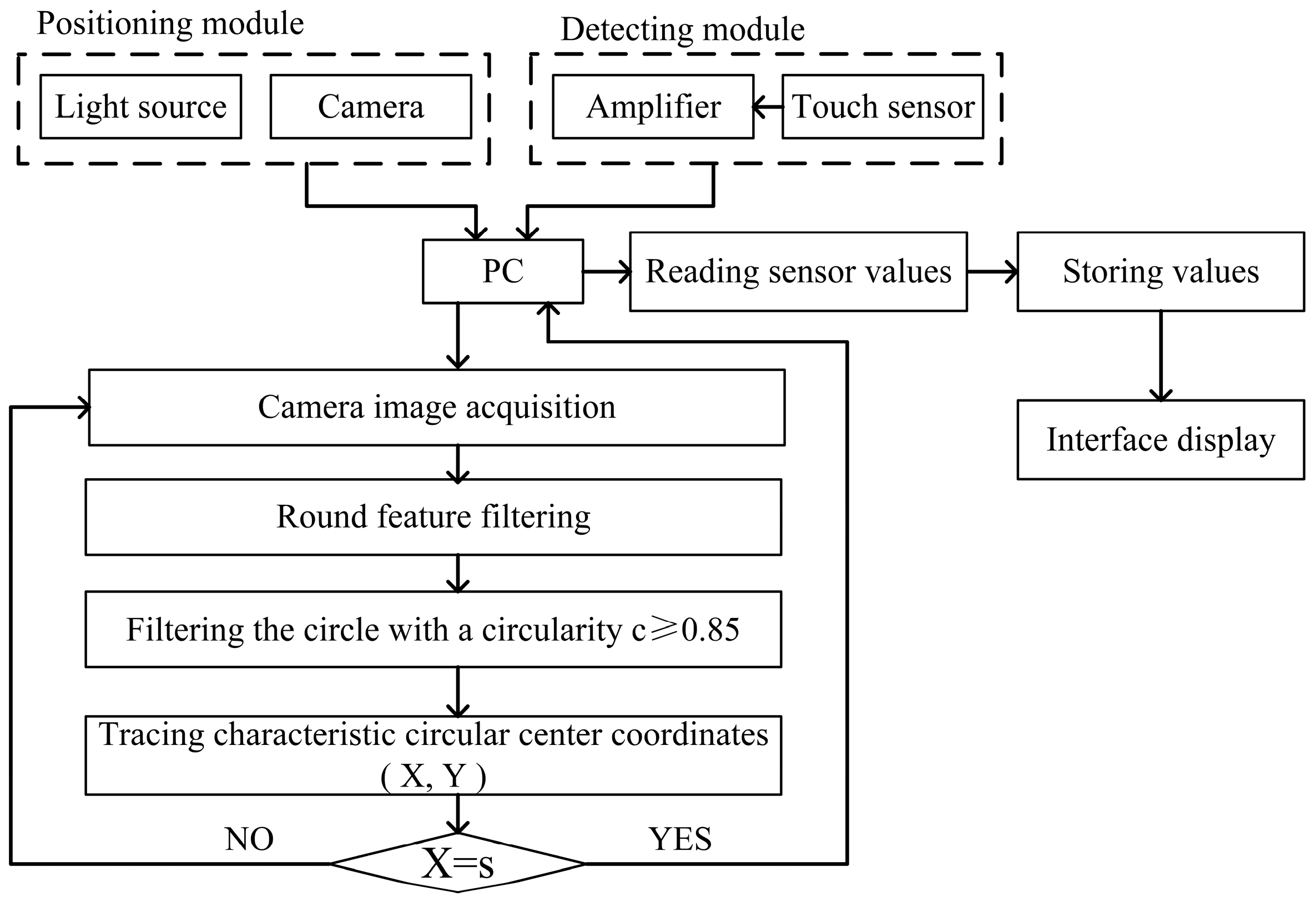
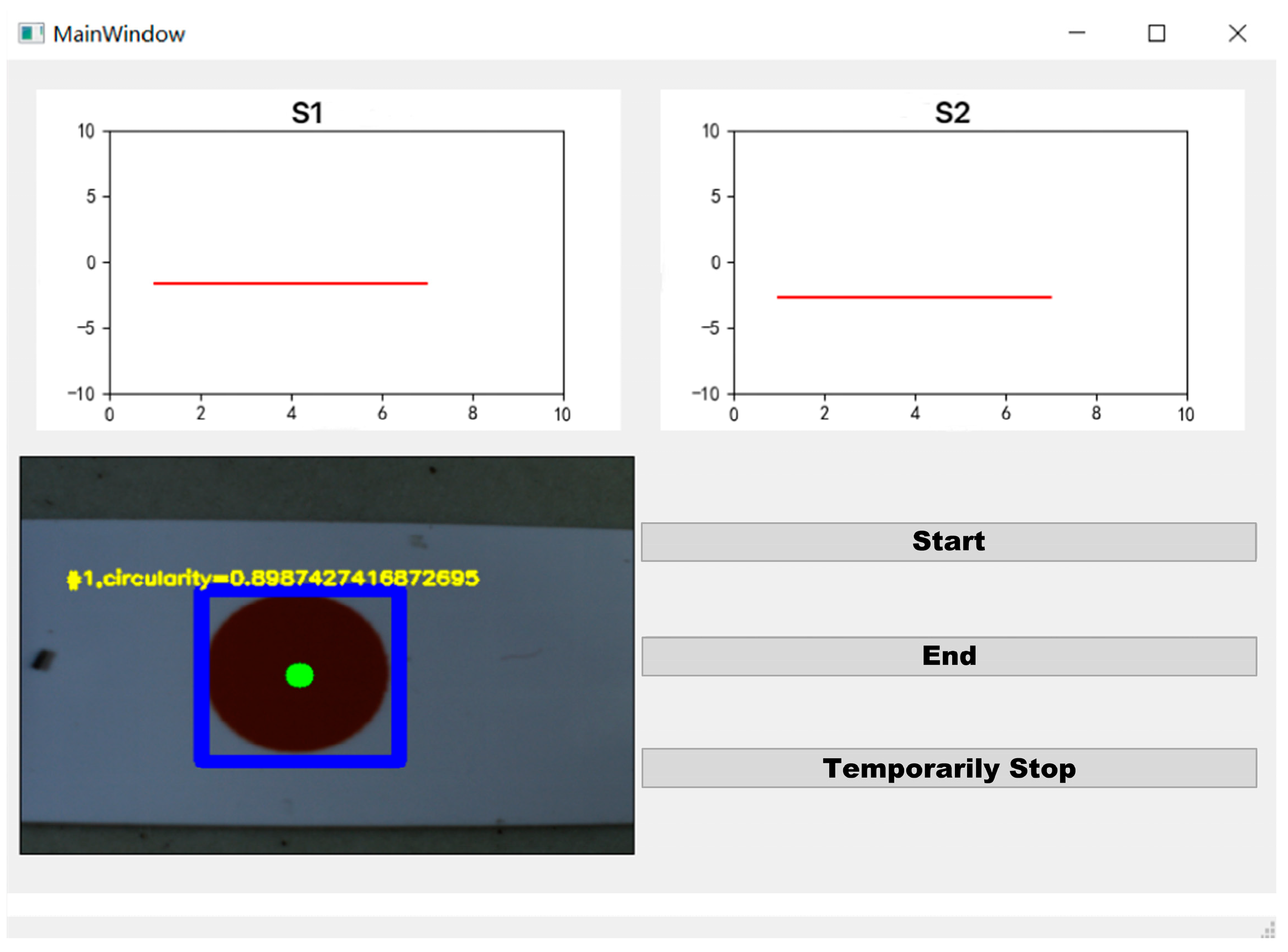

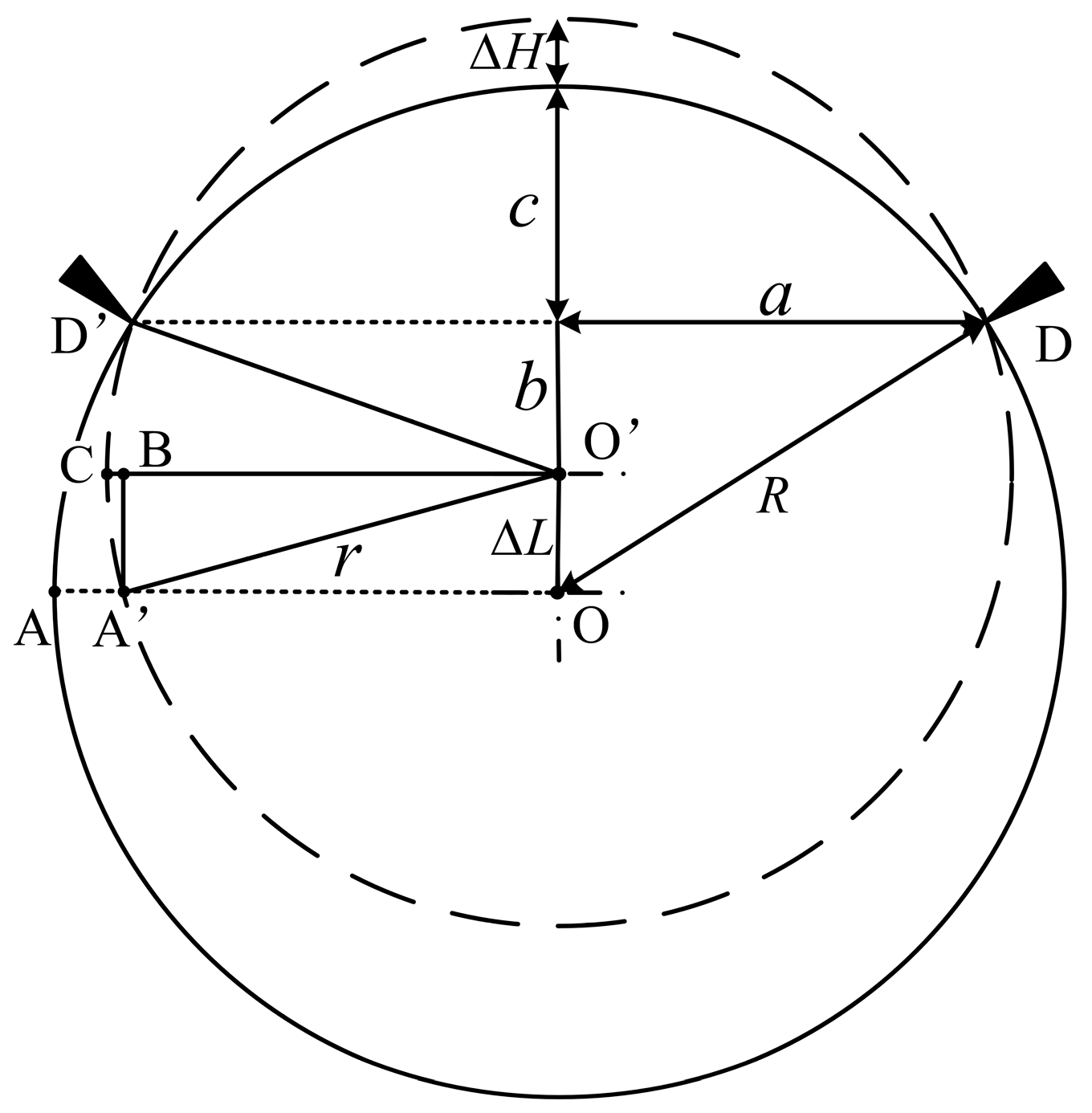
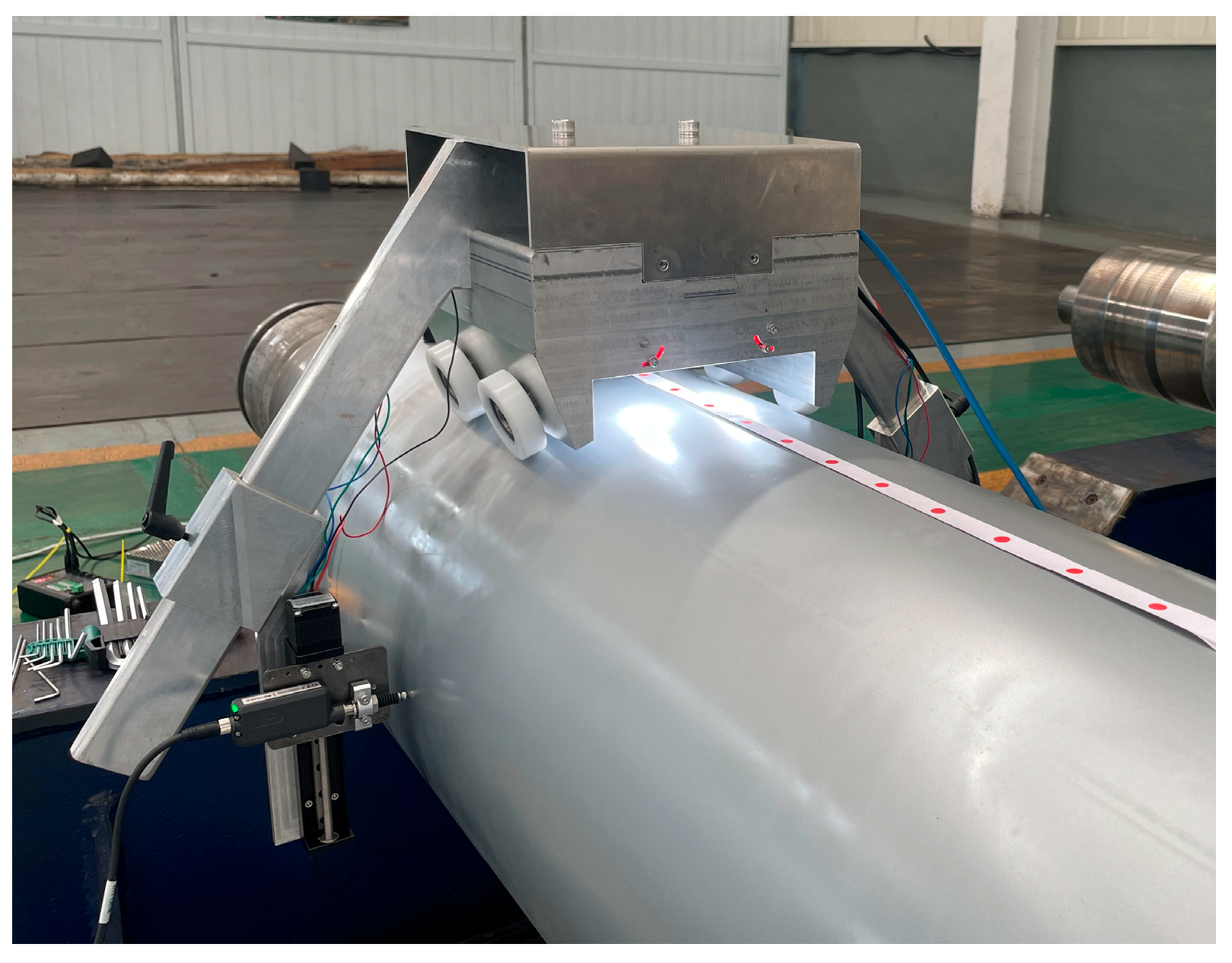
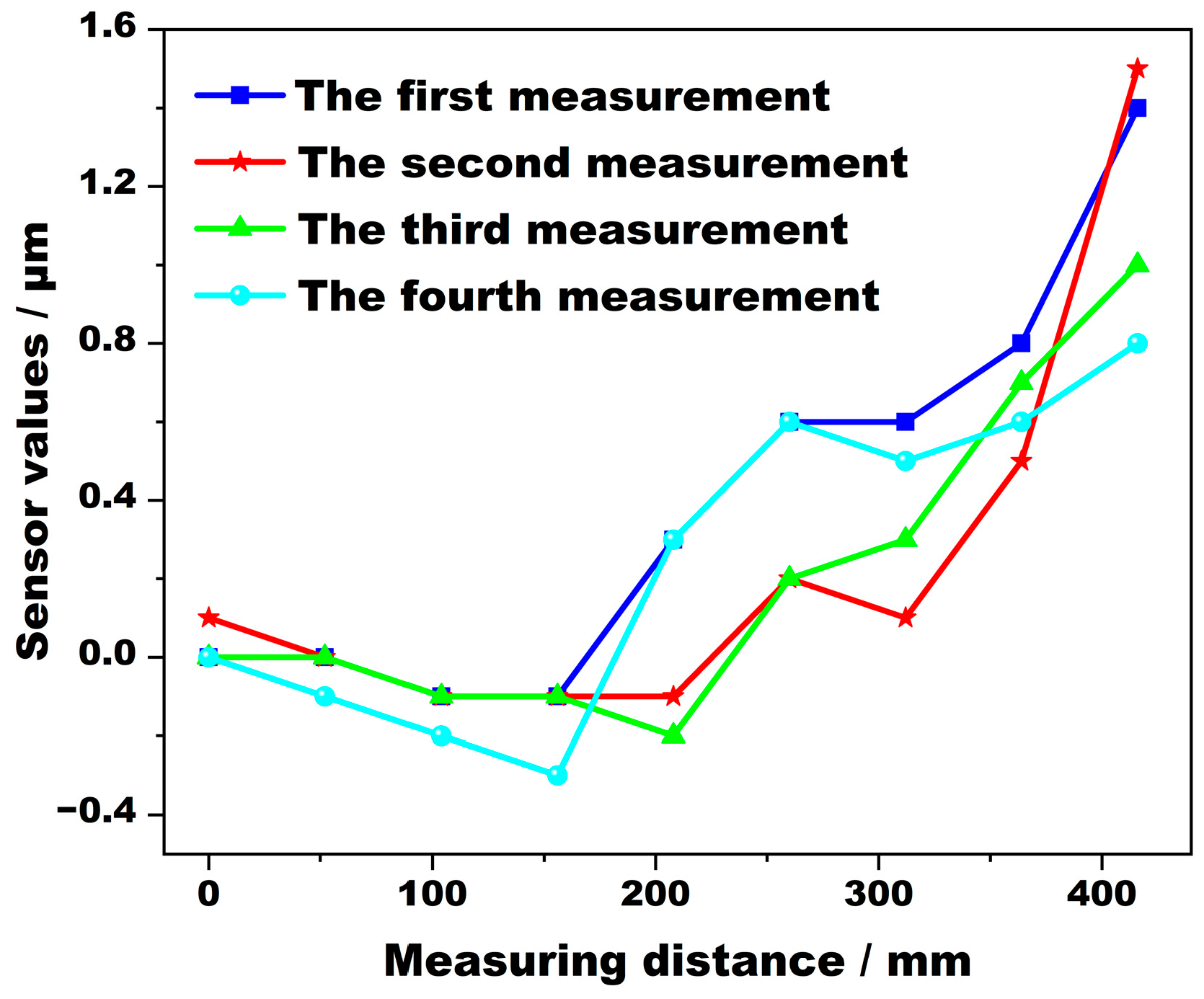
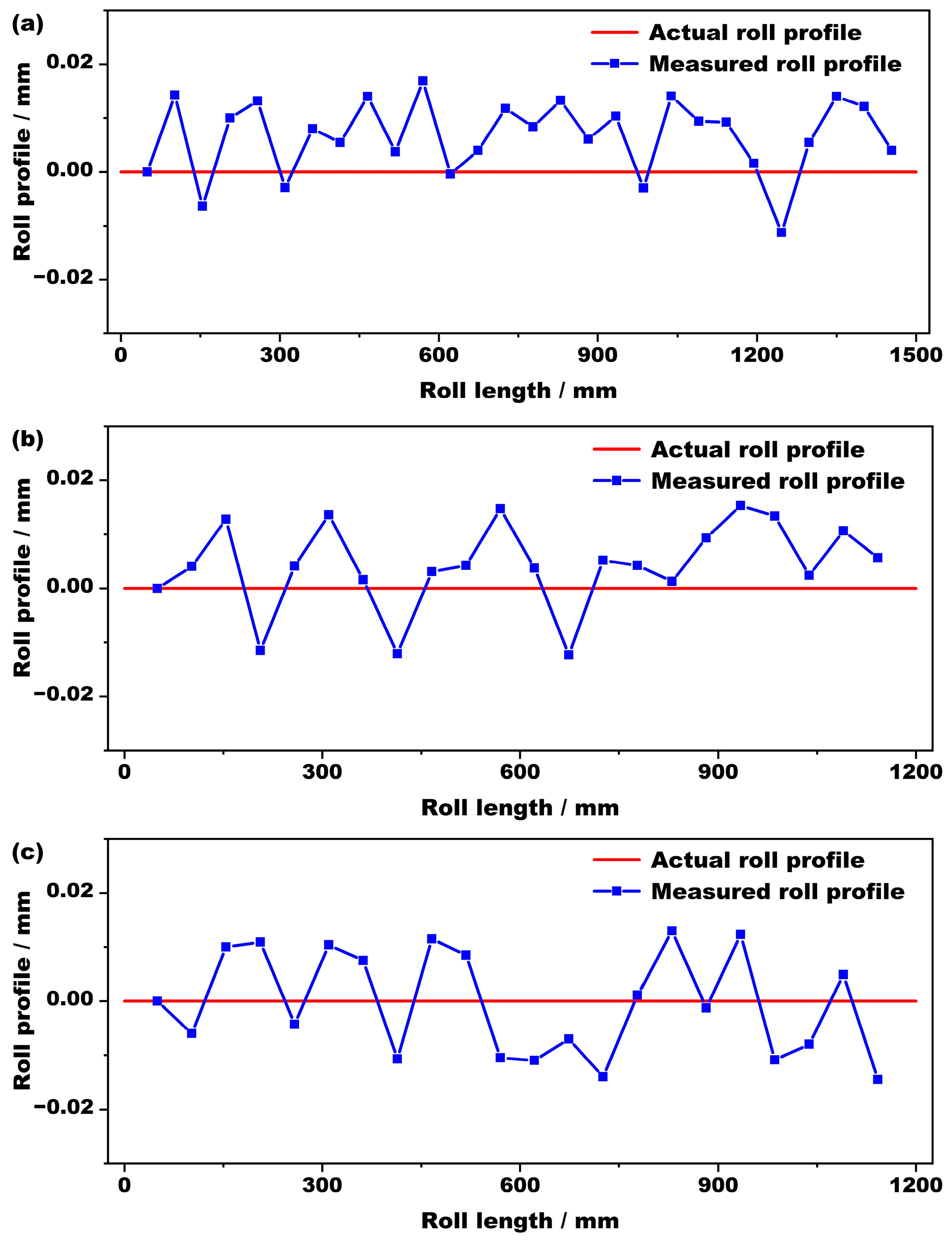
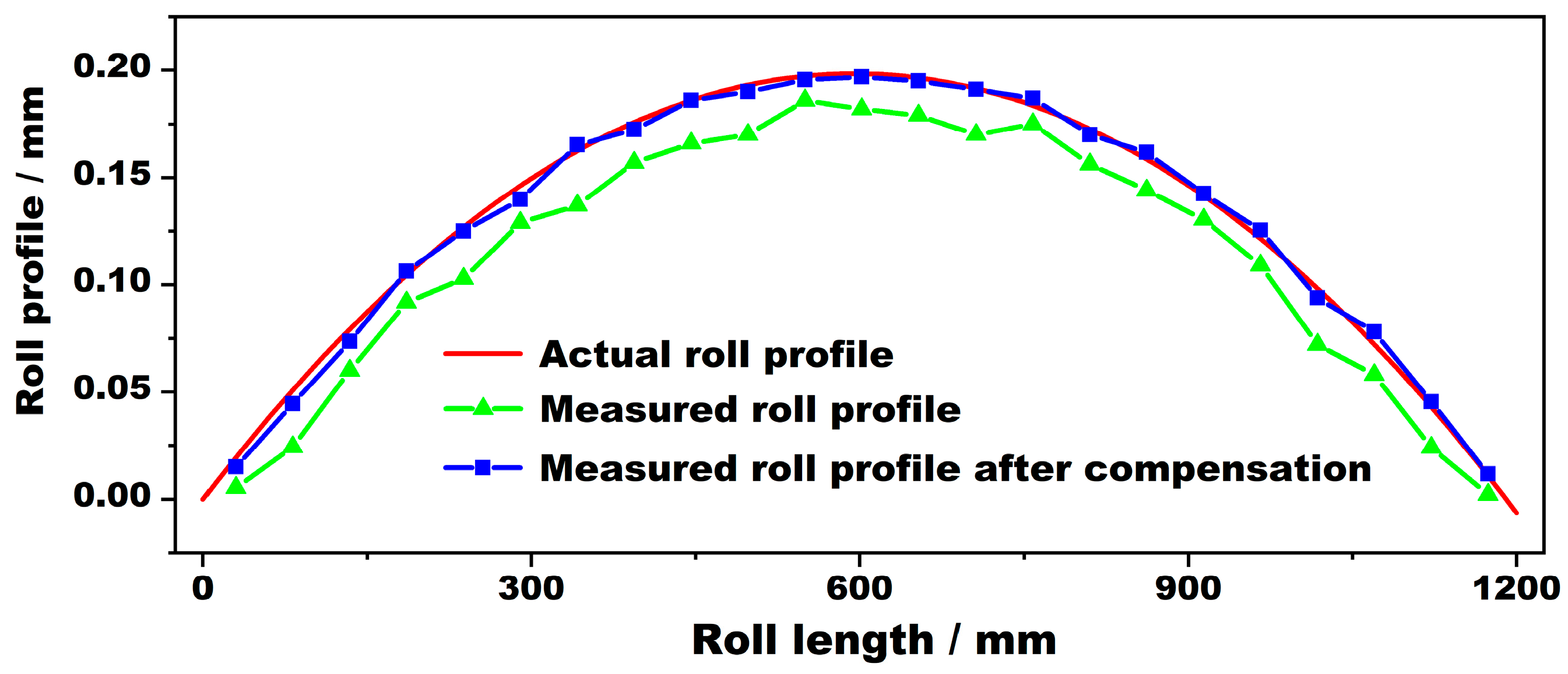
Disclaimer/Publisher’s Note: The statements, opinions and data contained in all publications are solely those of the individual author(s) and contributor(s) and not of MDPI and/or the editor(s). MDPI and/or the editor(s) disclaim responsibility for any injury to people or property resulting from any ideas, methods, instructions or products referred to in the content. |
© 2024 by the authors. Licensee MDPI, Basel, Switzerland. This article is an open access article distributed under the terms and conditions of the Creative Commons Attribution (CC BY) license (https://creativecommons.org/licenses/by/4.0/).
Share and Cite
Zheng, J.; Huang, H.; Hu, Q. Automatic Roll-Profile Positioning Detection System Based on Contact Sensor. Sensors 2024, 24, 7606. https://doi.org/10.3390/s24237606
Zheng J, Huang H, Hu Q. Automatic Roll-Profile Positioning Detection System Based on Contact Sensor. Sensors. 2024; 24(23):7606. https://doi.org/10.3390/s24237606
Chicago/Turabian StyleZheng, Jiali, Huagui Huang, and Qiwei Hu. 2024. "Automatic Roll-Profile Positioning Detection System Based on Contact Sensor" Sensors 24, no. 23: 7606. https://doi.org/10.3390/s24237606
APA StyleZheng, J., Huang, H., & Hu, Q. (2024). Automatic Roll-Profile Positioning Detection System Based on Contact Sensor. Sensors, 24(23), 7606. https://doi.org/10.3390/s24237606





